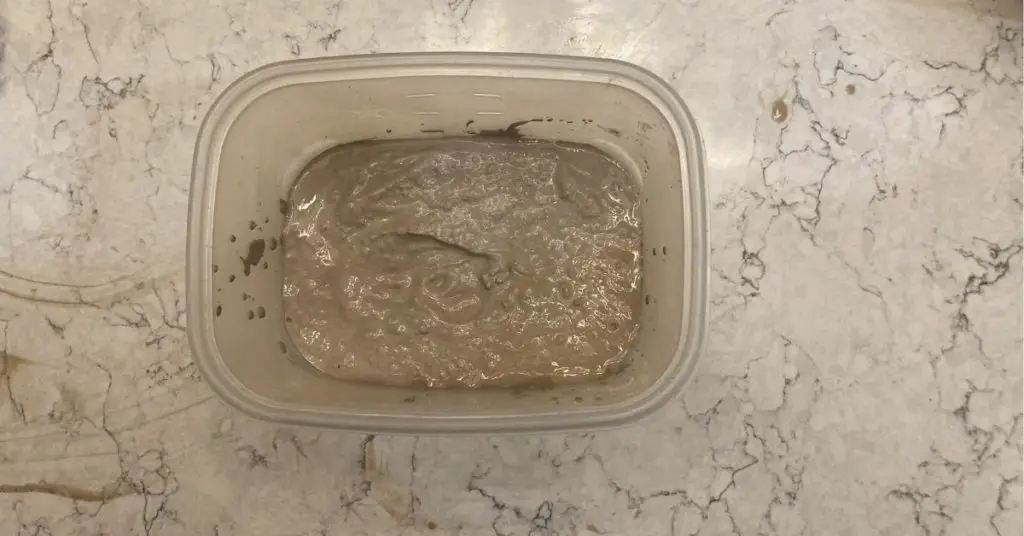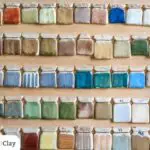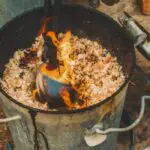I’m sitting here in the studio looking at a container of slip thinking “gross”. And I’m sure you can relate if you’ve ever put your hand into a container of the stuff.
Clay slip may be a slimy mystery to those new to ceramics. So in this article, we cover what slip is, why ceramic artists use clay slip, and how to make slip yourself.
what is clay slip in pottery?
Clay slip or “liquid clay” is a liquid mixture of clay in water. You’ll sometimes hear slip referred to as clay slurry. It has a consistency like heavy cream though it can be runnier depending on what you’re using it for.
Use of slip has an important role in making ceramics.
What is clay slip used for in pottery?
There are different ways you can apply slip to a piece of pottery. In this blog, we’ll cover the three most common ways:
- For decoration
- For pouring molds
- As an adhesive to bond pottery pieces together
In the next, section will cover each slip technique in detail.
1. Decoration
You can use potters slip to decorate vessels. The process is called slip trailing. The potter fills a slip trailing instrument (Amazon) with the clay slurry (Slip trailers look a lot like squeeze bottles you’d find in a diner). Then, applies it to the sides of the clay body. The decorative flourish becomes part of the pot when fired. It’s a great way to add texture and depth with intricate designs to a piece right off the pottery wheel.
Here’s a great video on slip trailing from Karen’s Pots and Glass.
2. Pouring molds (slip casting)
Slip casting is a common method of forming intricate pieces with the help of a mold. Plaster molds allow you to make identical copies of your work. Molds are ideal for imprinting complex details on many pieces.
To use potter‘s slip in a mold, a potter pours slip into the plaster cast. You’ll want to pour enough to create a layer on the surface of the interior walls of the plaster mold. The slip then sets and takes for form of a mold.
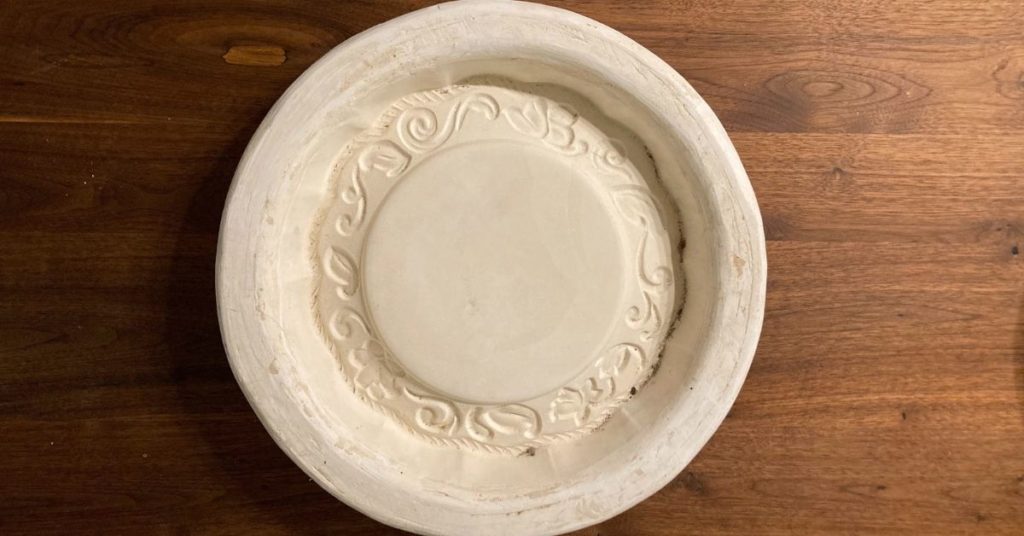
3. Adhesive to bond pieces (slip and score)
A great way to adhere two pieces of clay together is to do a process called slip and score. Scoring is scratching marks on the surface of moist clay. A sculpting set helps a lot with scoring.
The slip is then added to the scored surface and acts as a glue. The two clay parts are joined with some light pressure to the liquid slip and scored edges.
3 types of clay slip in pottery
There are three primary types of clay slips.
1. Clay slips
What is it used for?
Clay slip is primarily used to adhere clay pieces together and to decorate vessels. It’s sometimes referred to as a joining slip.
Ratio (Approximate)
- Clay: 60%
- Water: 40%
What is the consistency of clay slips?
It’s typically a heavy cream consistency. It will run like syrup if you turn your container to its side.
2. Casting slip
What is it used for?
Casting slip is used in conjunction with plaster molds. You use liquefied slip and pour it into a plaster mold to create a ceramic replication of the mold.
Ratio (Approximate)
- Clay: 75%
- Water: 25%
What is the consistency of casting slip?
This potter’s slip uses less water. It’s typically a heavy cream consistency. It will run like syrup if you turn your container to its side.
3. Engobe (not really slip)
Engobe is technically not the same as slip, though it’s often looped in as a thicker, colored slip. But consist of more than just clay and water.
What is it used for?
Engobe is commonly used to add depth and color to a piece. It’s applied after bisque firing. Ingredients
- Clay
- Water
- Flux
- Silica
What is the consistency of engobe?
Engobe is the consistency of thick paint.
How to make slip
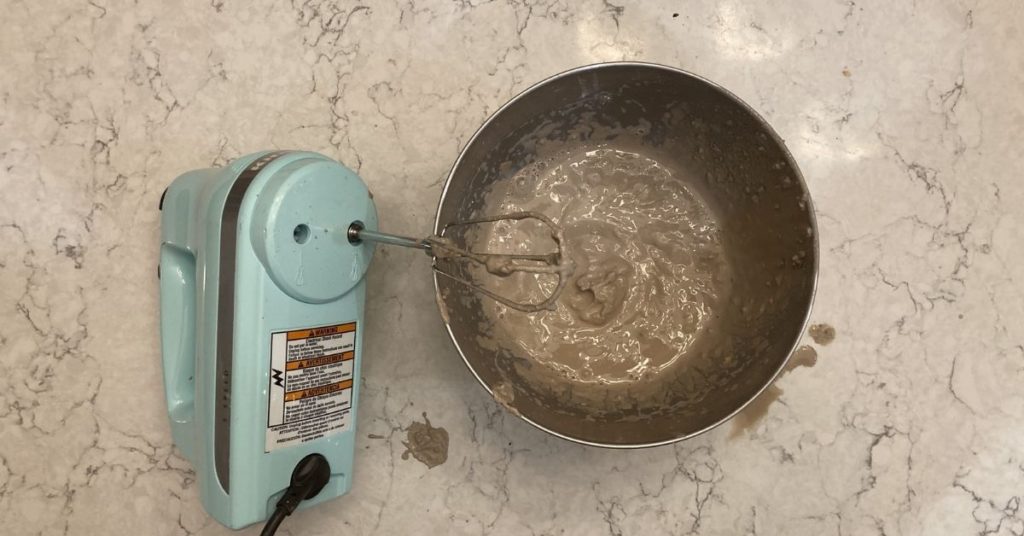
Making pottery slip clays is essentially mixing clay and a little water together. It’s a straightforward, albeit messy, process. 6 steps:
- Collect pieces clay scraps.
- Break up the clay slabs into coin-sized pieces
- Add your clay to water in soak in a gallon bucket
- Blend the clay/water mix with a kitchen blender or drill blender
- Straining your slip to make it absolutely smooth
- Store the pottery slip so that it maintains its consistency for future use
The goal is to recycle unusable clay into potters slip. I look around the studio and gather clay that won’t (or can’t) be used in the future. And make sure you use pieces of dry clay, not wet clay.
Read our post “how to make clay slip” for a full walk-through for best results.
Something to consider when making pottery slip is what it will be used for. If you need it to hold up differently than a traditional clay slip, add soda ash. Soda ash is a fine granular material is an active flux. It increases strength and workability and reduces shrinkage.
Conclusion
Slip, simply put, clay slip in pottery is a bit of clay and enough water to create a very useful substance. After this article, I hope slip is not just that gross gel-like item you see around the studio. Instead, you now know it can adhere different clay bodies together and be used in molds to create beautiful pieces.
If you want to see a step-by-step article on how to make clay slip, click here.
You don’t need to be an expert potter to do this, so try new things! Add clay slip to your next pot and send us a picture if you do. We’ll hang it on our virtual fridge 🙂
If you have questions, please let us know! You can email hello@wheelandclay.com.
Related Articles
Did you like what you read? Great! We have more articles on the blog. Check out a few of our most popular:
We also have an article about the ancient Greeks. It’s considered widely that the Greeks were some of the first to use slip decoration on their pottery. Check out that article at the link.

